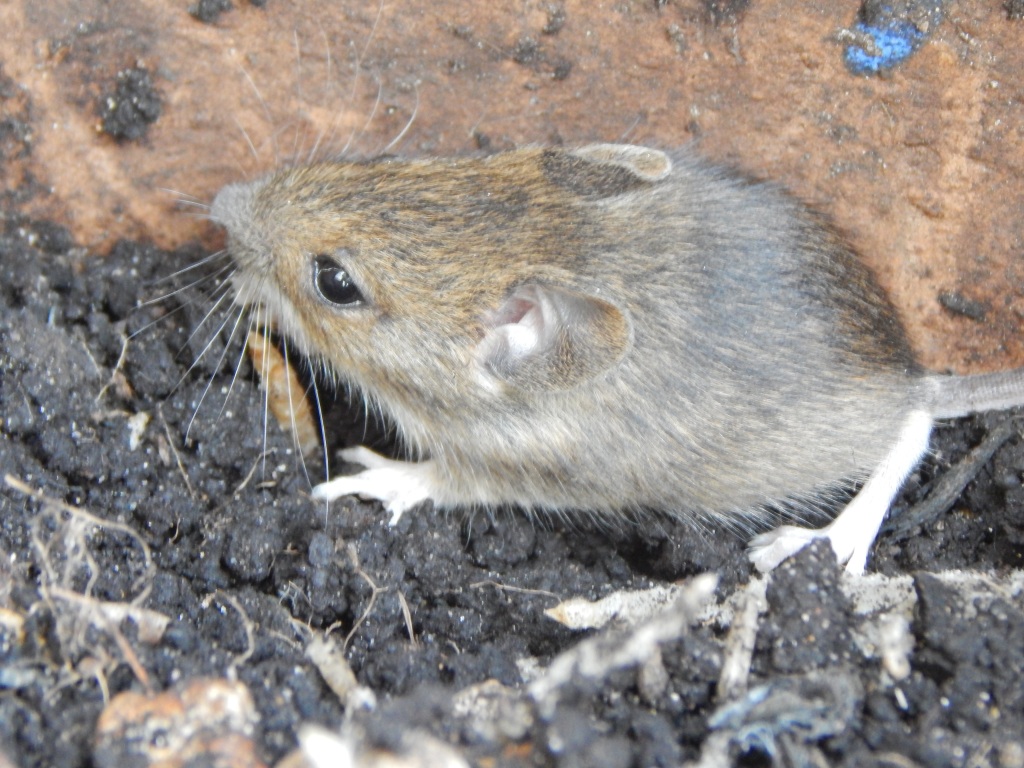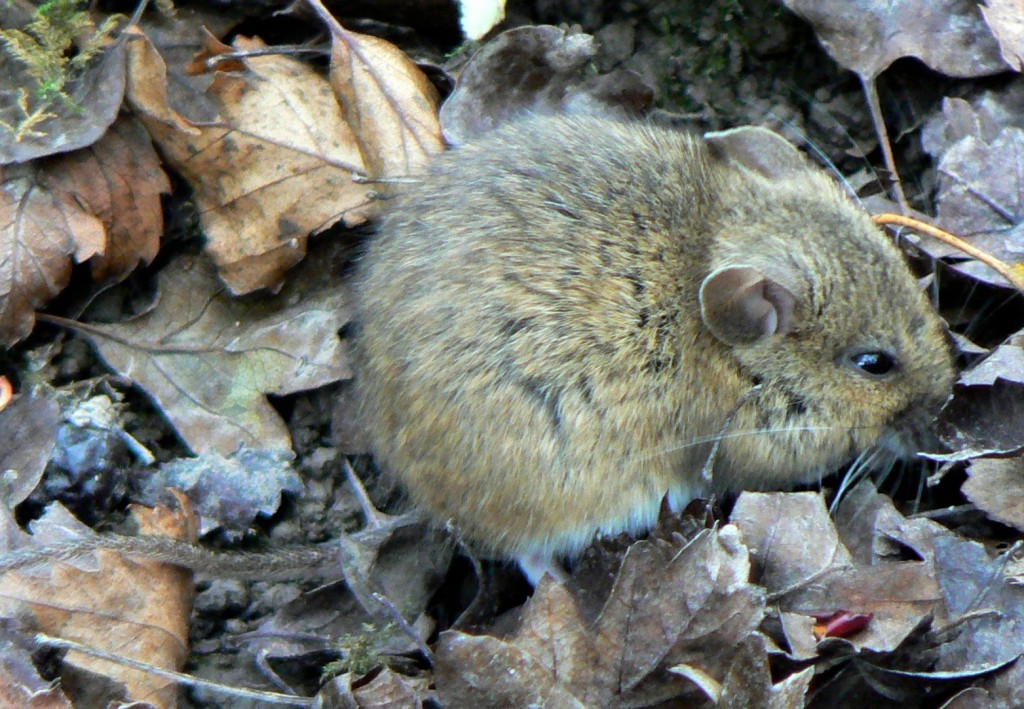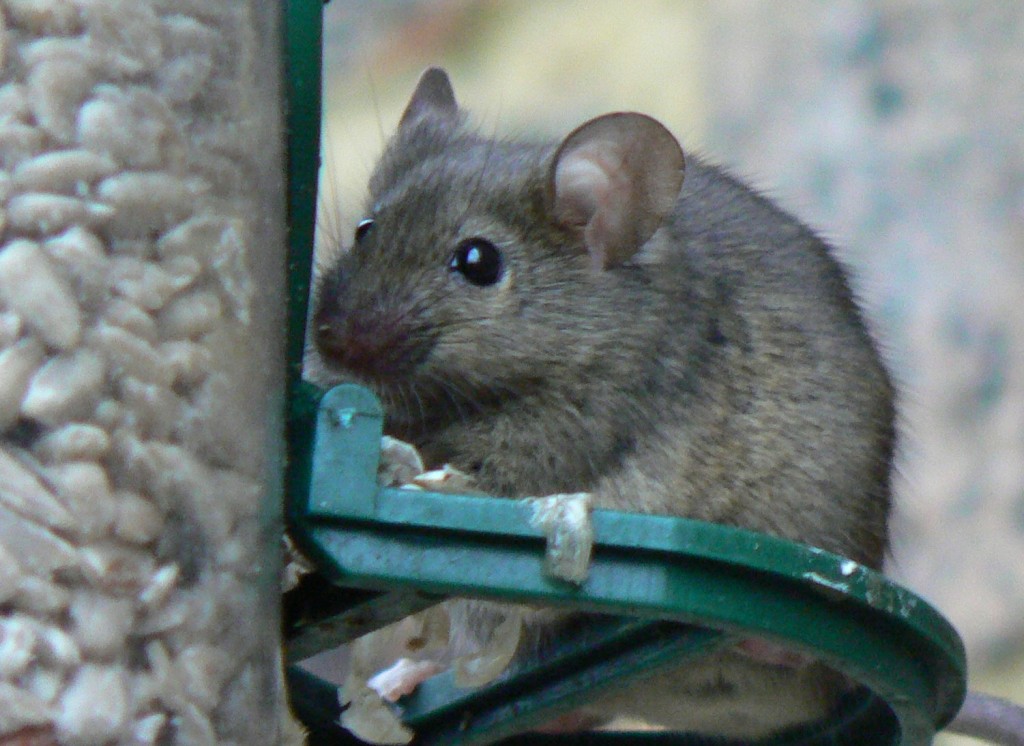
[232] Mus musculus domesticus, House Mouse
Introduction
Mus musculus, the House Mouse, usually just called a mouse, is a small wild rodent mammal that has become associated with human habitations. It has three (or more) geographic subspecies sometimes treated as separate species, and Mus musculus domesticus. the Western European House Mouse also includes the Fancy Mouse and Laboratory Mouse.
Taxonomy
Kingdom – Animals
Phylum – Chordates
Class – Mammals
Superorder- Euarchontoglires/ Supraprimates
Grandorder – Glires (Rodents and Lagomorphs)
Order – Rodentia
Suborder – Myomorpha (Mice, rats, voles and others)
Superfamily – Muroidea (Mice, rats, voles and others)
Family – Muridae (Mice, rats, gerbils)
Genus – Mus (Mice)
Subgenus – Mus
Species – Mus musculus
Scientific Name – Mus musculus domesticus
Taxonomic levels between Mammals and Rodents are subject to discussion but all modern science puts Rodents quite close to Primates.
Name
Mouse (plural: mice) is a very old word cognate with the Latin mus, and musculus is just a diminutive of mus.
Rodents
Rodents, which include mice, rats and squirrels, have a pairs of incisor teeth that continue to grow in the upper and lower jaws.
[Rabbits and hares also have these growing teeth but are now considered as a separate family, Lagomorphs.]
Description
The mouse is a familiar small mammal with a pointed nose and long tail. The tail is used for balance. When eating or fighting they can stand on their hind legs, supported by the tail.


They are omnivorous but mostly eat vegetation.
They are so well adapted to human habitation that they are now much more common near people than in the wild.
Mice were originally native to India but spread to Europe from about ten thousand years ago. They are thought to be one reason for the domestication of Cats.
They are one of the most common unwanted pests in houses, often seeking warmth in the autumn or winter after living outside.
Habitat and use
Mus musculus domesticus is native to western and northern Europe and some other areas. The Eastern European House Mouse, M m musculus, is found in the south and east of Europe. There is a zone where both subspecies can hybridize.
They are found in fields and in agricultural setting but much more often in and near houses.
Mice are sometimes kept as pets when they are known as Fancy Mice. As for many other animals they now have a number of varieties that are exhibited competitively. See [243] Rabbits, [296] Rats, [066] Dogs, [144] Cats, [130] Horses, [054] Cattle, [245] Sheep and [328] Pigs – we also have guinea pigs, gerbils, hamsters, ferrets, snakes, parrots, budgerigars, chickens and other fowl, goldfish and other fish, and many other more obscure animals.
There are also large numbers of Laboratory Mice used in scientific experiments. These originate from either Mus musculus or from two American species. They reproduce relatively rapidly and continued interbreeding has led to several distinct strains that can differ in appearance or behaviour from wild mice. [Inbred strains, produced by twenty or more brother-sister or parent-child matings, are very uniform in their characteristics, almost like clones, in a way that can make experiments on them more valid.]
Other Notes
It should not surprise you that as well as sometimes living in houses, some mice have learned to make use of bird feeders.


Anyone with a cat will know that mice are frequently hunted by cats. They are also sometimes the prey of [001] the Sparrowhawk.
See also
Apodemus sylvaticus, the Wood Mouse; Apodemus flavicollis, the Yellow-necked Mouse; and Micromys minutus, the Eurasian Harvest Mouse, are other related species in the family Muridae that occur in the wild in Britain. The first two of these can be called Field Mice.
Their other close relatives are [042] the Water Vole and [296] Norwegian Rat.
